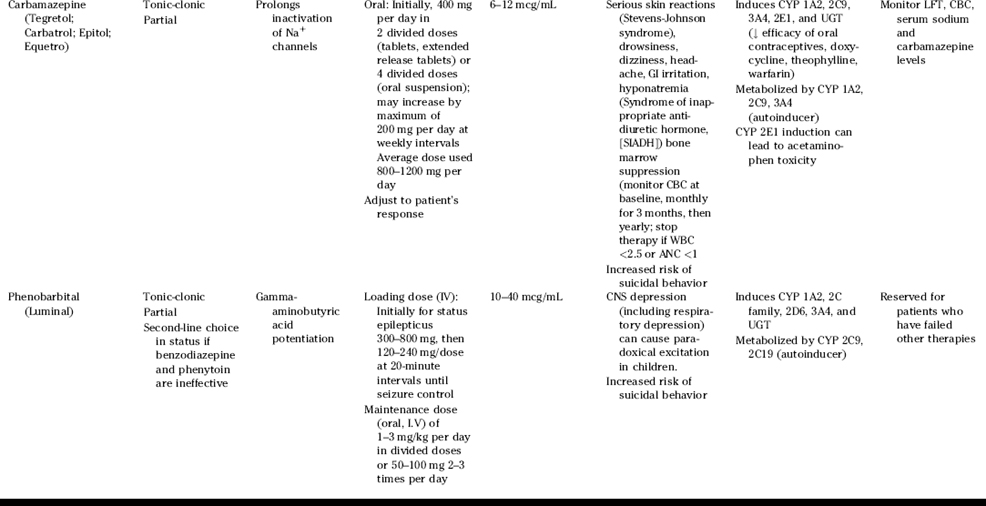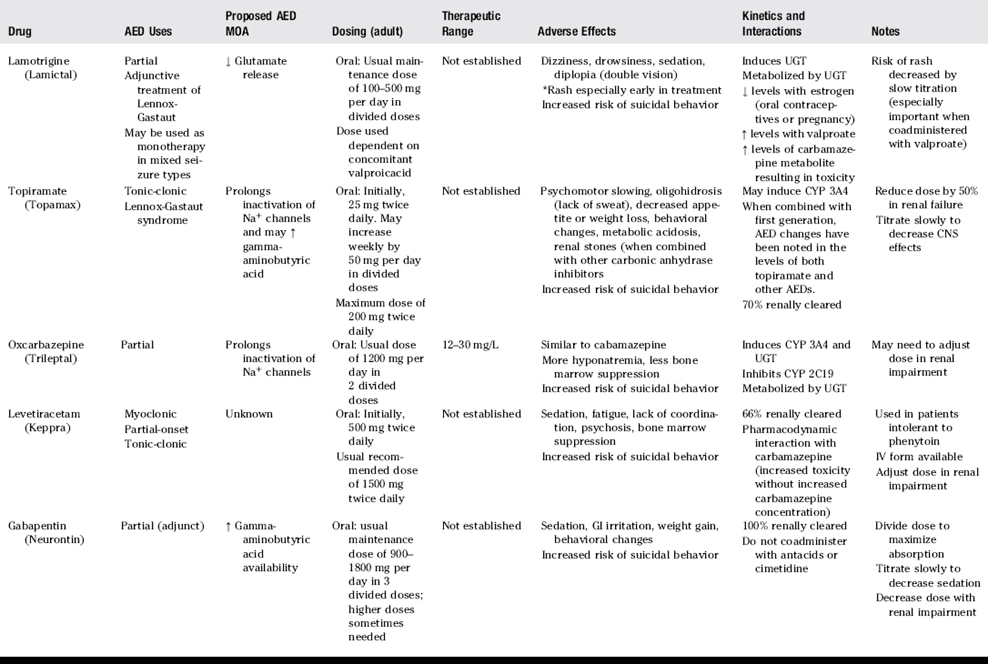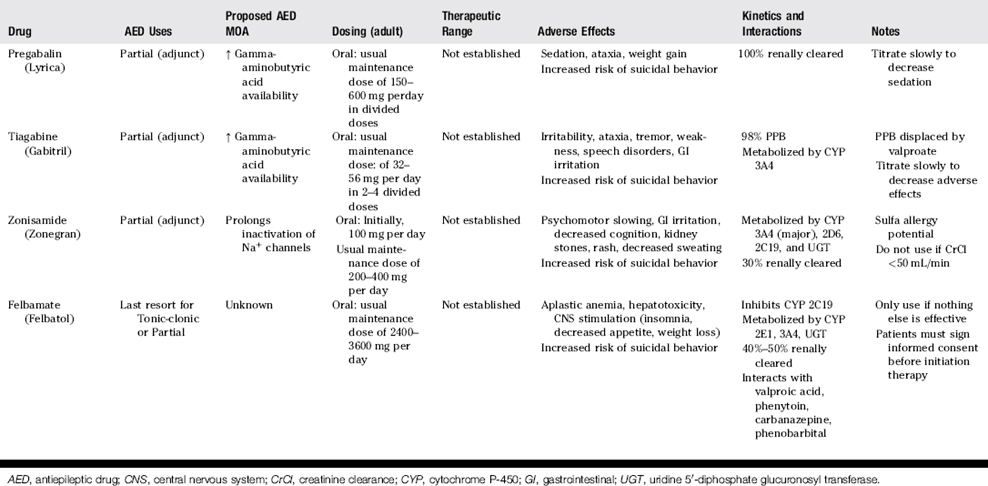CHAPTER 22 Seizure Disorders
I. Introduction/Definitions
A. Seizure: A seizure occurs when these neurons generate electrical discharges that spread throughout the brain. This can occur with both normal and abnormal nerve cells.
B. Epilepsy: Epilepsy is a group of disorders characterized by recurrent seizures. In epilepsy, brain cells (neurons) create abnormal electricity that causes seizures or jerking movements. In some cases, seizures cause a loss of consciousness, a period of confusion, a staring spell, or muscle spasms. A single seizure is not considered epilepsy. Individuals with epilepsy have repeated episodes of seizures. Different forms of epilepsy are either secondary to a particular brain abnormality or neurological disorder or are said to be idiopathic (without any clear cause).
II. Types of Seizures
A. Partial seizures
2. They may be further divided into simple partial and complex partial
B. Generalized seizures
1. Involve larger areas of the brain, often both hemispheres (sides), from the onset. They are further divided into many subtypes. The more common types include tonic-clonic (grand mal), absence (petit mal), and myoclonic seizures.
a. Tonic-clonic (grand mal)
2) Sustained muscle contraction (tonic), followed by alternating muscle contractions and relaxation (clonic)
3) An aura or an unusual feeling that often warns patients that they are about to have a seizure, usually immediately before the loss of consciousness
b. Absence (petit mal)
1) Only loss of consciousness occurs and there are no other associated motor symptoms, such as jerking
III. Signs and Symptoms
A. Symptoms vary depending on the type of seizure
1. Partial seizure
a. Simple partial seizures do not result in loss of consciousness. These seizures may alter emotions or change the way things look, smell, feel, taste, or sound.
2. Generalized seizure
a. Absence seizures (petit mal): characterized by staring, subtle body movements, and brief lapses of awareness
b. Tonic-clonic seizures (grand mal): most common form of generalized seizures. They are also the most widely recognized epileptic seizure. In a tonic-clonic seizure, the person loses consciousness, the body stiffens, and the person falls to the ground. This is followed by jerking movements. After a minute or two, the jerking movements usually stop and consciousness slowly returns.
IV. Treatment (Tables 22-1 and 22-2)
A. Anticonvulsant medications are the treatment choice for epilepsy and seizure disorders. Treatment with one anticonvulsant agent is the goal, if possible.
B. When initiating therapy for epilepsy, drugs should be chosen based on seizure type(s) and drug side effect profiles.
C. AED and oral contraceptives
1. Many AED induce the metabolism of estrogen. If breakthrough bleeding occurs, the ethinyl estradiol component of the oral contraceptive should be increased to 50 mcg/day per active pill.
2. As folate metabolism is altered by many AED, folic acid should be added to limit birth defects in the event pregnancy occurs.
V. Medications Associated with Decreasing Seizure Threshold
C. Antimicrobials/antivirals: in general, seizures are more likely with these agents when dosage adjustments are not made for renal impairment or other clinical parameters (e.g., imipenem, penicillins)
J. Sedative-hypnotic drug withdrawal (e.g., benzodiazepine withdrawal in dependent patients, or the use of flumazenil in benzodiazepine-dependent patients
VI. Status Epilepticus
B. Prolonged, repetitive seizure activity that lasts more than 20–30 minutes, during which time the patient is unconscious. Status epilepticus is a medical emergency with a significantly poor outcome. It can result in death if not treated aggressively. Its causes include improper use of certain medications, stroke, infection, trauma, cardiac arrest, illicit drug overdose (such as cocaine or methamphetamine), and brain tumor.
C. Treatment: The goal of treatment always should be immediate diagnosis and termination of seizures. For an AED to be effective in status epilepticus, the drug must be administered intravenously (or rectally, as with diazepam, if IV access not immediately accessible) to provide quick access to the CNS without the risk of serious systemic and neurologic adverse effects.
PATIENT PROFILE
< div class='tao-gold-member'>
Only gold members can continue reading. Log In or Register to continue
Stay updated, free articles. Join our Telegram channel

Full access? Get Clinical Tree







